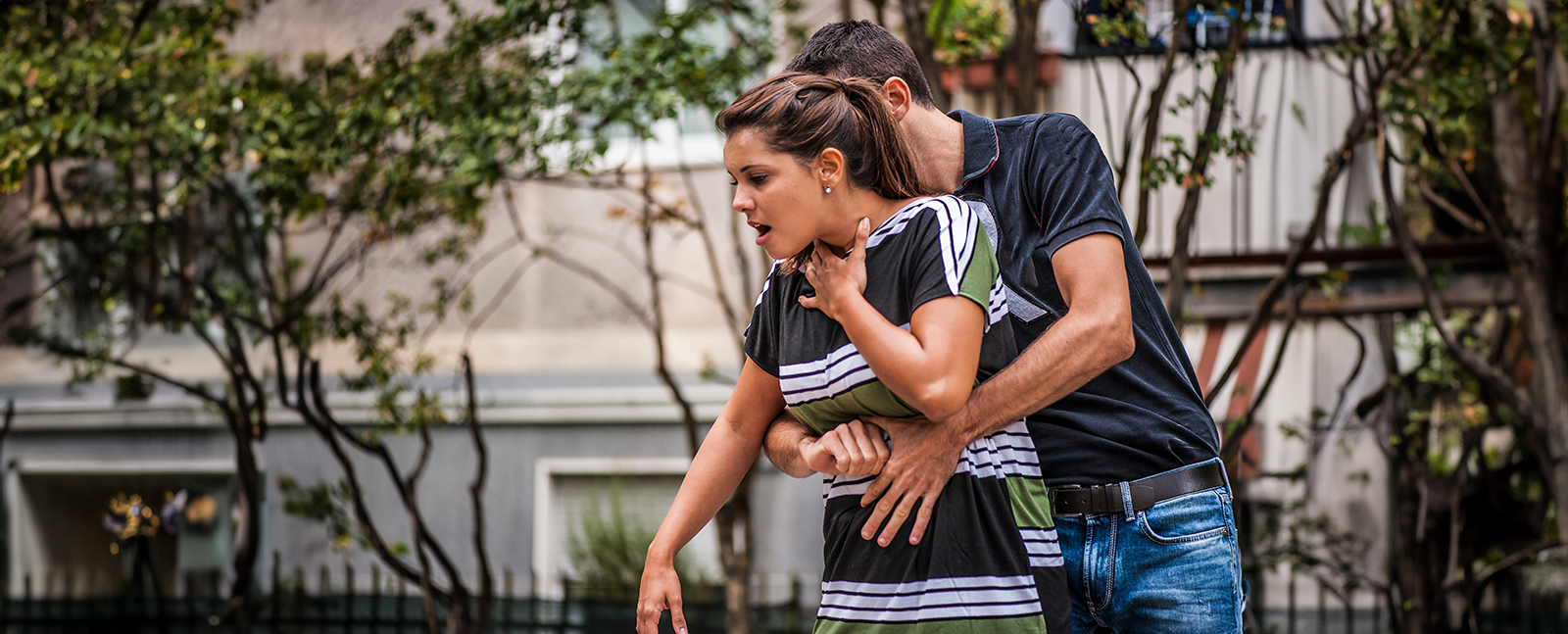Actions to take if an adult is choking, a child is choking – or you are choking.
When someone is choking, it’s important to act quickly to ensure they get the help they need. “Choking is really scary regardless of how old you are,” says Shake Ovasapyan, NP-C, an advanced practice provider who treats patients in the emergency department at USC Verdugo Hills Hospital (USC-VHH).
She explains the different steps to take depending on whether the choking victim is an adult or small child and what to do if you are the one choking and there’s no one around to provide assistance.
Signs of choking and common choking hazards
The universal sign of choking is when someone clutches their throat with one or both hands. Wheezing and squeaky or strained sounds are indicators of an airway blockage.
Other warning signs to watch for include a confused or panicked facial expression, if the skin or lips appear to be turning blue or if the person is struggling to make eye contact.
Ovasapyan says common choking hazards she sees in the OR include chicken and fish bones for adults, as well as hot dogs. For young children, risky foods include grapes, carrots, popcorn, jellybeans, lollipops and all types of nuts.
“A big suffocation hazard for children under age eight are latex balloons,” Ovasapyan warns. “Once a balloon pops, kids like to chew on the small pieces, and if they swallow them, the latex can stretch and form to the shape of their airway, making it very difficult to dislodge. This can also occur when children are trying to blow up balloons and accidently swallow them instead.”
What to do when someone is choking
The correct actions to help someone who is choking “have more to do with what signs they are exhibiting,” Ovasapyan explains. She says she divides choking victims into two categories: babies, and anyone else older than one year.
First steps to help an adult or child
In the movies, characters immediately administer abdominal thrusts on people who are choking, but Ovasapyan says that’s not necessarily a good idea. Try to talk to the person first and ask if they are choking, she advises. Stay beside them while you or someone else calls 911.
Ovasapyan emphasizes that if the person is able to cough, encourage them to continue doing so. “Their body is doing what it’s naturally supposed to do to eliminate the blockage,” she explains. “If they’re making noises, that means some air is getting in.”
Choking first aid measures
If the person can’t cough or talk but they are still conscious, then it’s time to provide first aid. If they’re not in this position already, encourage the person to bend over at the waist. Use the heel of your hand to hit between the person’s shoulder blades five times.
Five abdominal thrusts, otherwise known as the Heimlich maneuver, are the next step. Stand behind the victim, press your fist into their abdomen, just above the belly button, and thrust inwards and upwards. Continue alternating between abdominal thrusts and back blows until the obstruction is dislodged.
She says if the choking victim is a child, “it’s the same procedure, but you may have to kneel to get to the kid’s height and be able to do the thrusts appropriately.”
If the person is pregnant or obese, thrusts need to be higher on the body, Ovasapyan says. “Put your fist at the base of their breastbone, just above the lowest ribs, and press hard into their chest with a quick thrust.” Continue with back blows and abdominal thrusts until the source of the blockage has been removed.
Use CPR if the person passes out
If the person loses consciousness, stop and switch to chest compressions – which involve using your palms to push down on the center of the person’s chest.
“If you look in the mouth and you see things coming out, you can remove those objects,” says Ovasapyan. “But if there’s something in the back of the throat, don’t try to grasp it because that could cause the object to slide further down their throat.”
How to help a baby
A baby may be choking if they’re making high-pitched squeaky noises or can’t cough or cry. They may also look surprised or panicked.
“Position the baby face down along your forearm and keep their head lower than the rest of their body,” explains Ovasapyan. “Support their head and back while providing five firm back blows between the shoulder blades using the heel of your hand.” The vibration, along with the pressure, helps dislodge the object and open the airway.
If that doesn’t resolve the problem, she says to turn the infant over and do five quick, sharp chest thrusts. “Push down between the nipples about one-and-a-half inches deep.”
She says if the baby becomes unresponsive, use two fingers or your thumbs to administer CPR in the center of the chest.
What to do if you’re choking alone
If you’re choking and there isn’t anyone around to help, the first thing to do is cough forcefully if possible. If you’re able to speak, call 911 immediately.
Ovasapyan says self-administered abdominal thrusts are the next step if coughing didn’t dislodge the blockage. “Find a chair or a countertop, or anything that is similar in height to your abdomen. Put as much pressure as you can to the area right above your abdomen, right above your belly button.”
Next steps after a choking incident
After a choking incident, many people may think to offer the person some water – but Ovasapyan says this is the wrong thing to do.
“Don’t give them anything to drink or eat. Sometimes we’ll see swelling in the back of the throat, and we don’t want the water to go into the windpipe and potentially cause another problem,” she explains.
Stay by the person until medical professionals arrive, and make sure the person sits upright, Ovasapyan adds. “At the emergency room, we’ll examine the patient to make sure there aren’t other injuries.”
To prevent choking, Ovasapyan urges people to chew their food carefully and take their time while eating. Avoid eating or activity while walking around, as this increases the risk of aspiration.
Ovasapyan also advocates for educating yourself about how to help during these emergency situations. “I would encourage everyone to get basic training in CPR and on how to help someone who is choking.”
Author: Erin Laviola

